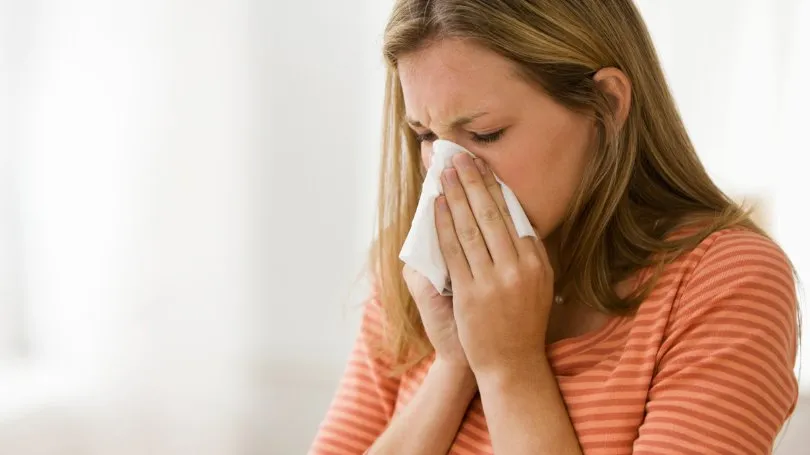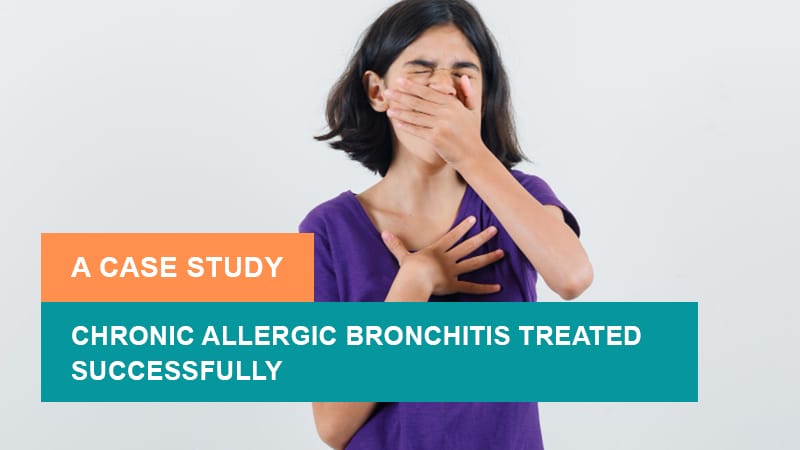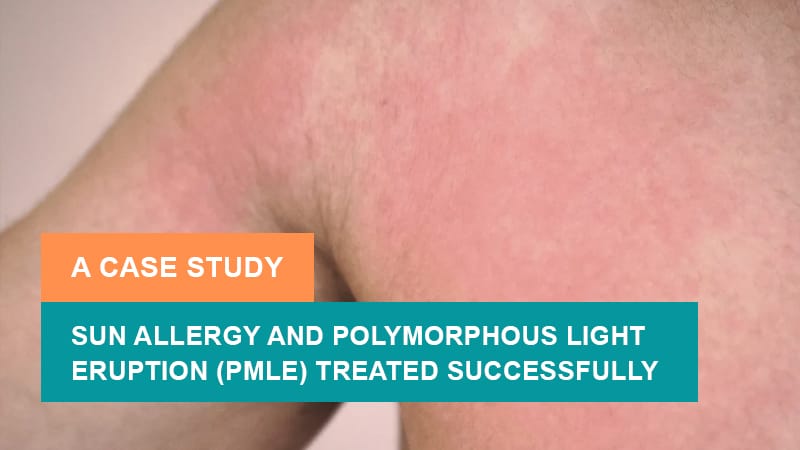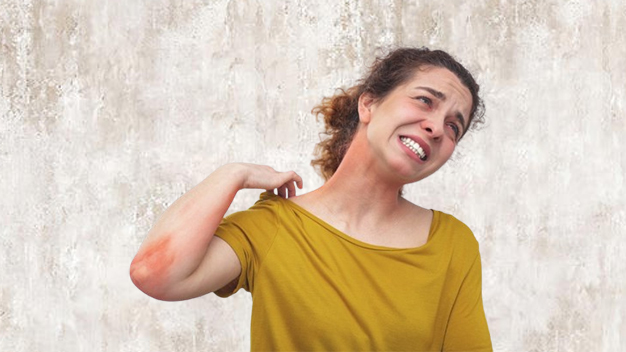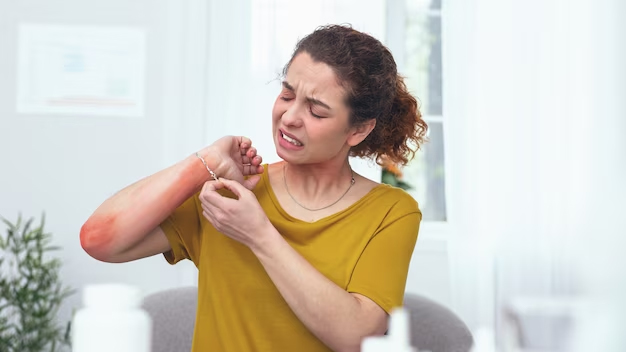On This Page
What is Allergic Diseases in Adolescence?
In Adolescence, an allergic reaction occurs when the immune system overreacts to a harmless substance known as an allergen. The immune system protects the body from infections, viruses and diseases. In some people, substances such as pollen, certain foods, latex, mould, pet dander, dust mites are allergens that trigger the production of antibodies called Immunoglobulin E (IgE). The common allergies occurring in adolescence include, Allergic rhinitis, Food allergy, Skin allergies etc. These antibodies travel to cells that release chemicals, causing symptoms most often in the nose, lungs, throat, sinuses, ears, lining of the stomach or on the skin. The first time a person with an allergy is exposed to the allergen, it may not cause a reaction. However, the person is then sensitized to the allergen can and even minor future exposures to this allergen produce an allergic reaction.
Clinical Features of Allergic Diseases in Adolescence
Most common allergies dealt with the Adolescence include:-
1. Food Allergy
Adolescent and adult patients, however, mainly acquire Food Allergy via primary sensitization to inhalant allergens on the basis of cross-reactivity between proteins in inhalant sources and in food. Food allergic reactions in adult patients – similar to those in children – range in severity from very mild and local symptoms, as in contact urticaria of the oral mucosa, to systemic symptoms involving distal organs, to a fatal outcome. Plant foods, such as fruits, nuts, and vegetables, are the most prevalent allergenic foods in this age group.
2. Asthma
It has been suggested that the improvement in Asthma during adolescence may result from diminished clinical and immunological responsiveness directly related to hormonal changes and that the effect of age on the prevalence of asthma in each sex may relate to differences in hormonal status, potentially influencing airway size, inflammation, and smooth muscle and vascular functions. However, few comprehensive studies are available. All wheezing is not asthma. Non-asthmatic wheezing illnesses may in part be attributable to anatomical abnormalities of the lung.
3. Allergic Rhinitis
Allergic rhinitis is a common problem in childhood and adolescence. This is partly the reason why it is often under perceived by patients and families, under diagnosed and its impact underestimated. Allergic rhinitis causes chronic disturbing symptoms which have a negative effect on physical, social and psychological well-being, as well as on school performance of children and teenagers:-
- Patients typically present with sneezing, pruritus and nasal congestion.
- Reduction of blood flow to the nose can lead to progressive nasal atrophy and clinical manifestations of atrophic rhinitis, and thinning and dryness of the mucosa make the elderly especially prone to rhinitis .
4. Atopic Dermatitis (AD)
Atopic Dermatitis (AD) persists from childhood through adolescence in around 40% of cases and some risk factors have been identified: female sex, sensitization to inhalant and food allergens, allergic asthma and/or rhino conjunctivitis, the practice of certain jobs. During adolescence, AD mainly appears on the face and neck, often associated with over infection by Malassezia, and on the palms and soles. AD persistence during adolescence is correlated with psychological diseases such as anxiety; moreover, adolescents affected by AD might have problems in the relationship with their peers. Stress and the psychological problems represent a serious burden for adolescents with AD and cause a significant worsening of the patients’ quality of life.
Ayurvedic View on Allergic Disease in Adolescence
According to Ayurveda the lifespan of an individual is divided into three parts known as Vaya. These are:-
- Balavastha (childhood), which lasts up to the age of 16 years.
- Madhyavastha (young and middle age), which lasts from the age of 16 years to 60–70 years.
- Vriddhavastha or Jirnavastha (old age), which refers to the period after 60 or 70 years.
The concept of immunity in Ayurveda is explained through many factors like the vital strength Bala and the vital energy of life Ojas that are responsible for the normal functioning of body and mind. Bala or the vital strength is that which can be called as the outcome of the equilibrium of tridoshas and this is achieved through the Ojas the vital essence of all the tissues. To make it simpler the Bala depends on the Ojas for its maintenance. Or the function of Ojas is to generate Bala.
Ayurvedic Reference of Allergic disease in Adolescence
व्यधिक्ष्मत्वं नाम व्याधिबलविरोधित्वं व्यध्युत्पदादक प्रतिबन्दकत्व II

From the treatment point of view both Bala and Ojas are the same. In short the immunity is the external manifestation of the Bala and this bala is responsible for the healthy functioning of mind and body of the individual. If the body is having a depleted amount of Ojas and sareera bala, it is not capable of withstanding the strength of disease. Thus immunity reduces and patient will be prone to allergic diseases.
The Vyadhikkshamatva, Bala and Ojas are not entirely different from each other. All of these directly or indirectly indicate towards body resistance. In view of prevention and recovery from disease, body resistance plays a significant role.
In adolescence, those who are not having good bala, good defense mechanism, when the tissues are not properly nourished, and people having weak satwabala (because mind and body are interdependent), the person is prone to fall sick.
Persons obese, emaciated, weak, whose muscles and blood are diminished, debilitated, overconsumption of food and under consumption of food with weak mental faculty are also prone to fall sick.
Causes of Allergic Disease in Adolescence
Allergic diseases are mostly caused by inhalant allergens, in particular mold and pollens, climate changes, food allergies, asthma etc.
Preventive Aspects for Allergic Disease in Adolescence
Food and activities have to followed accordingly to prevent disease and maintain good physical and mental health. These activities describe how to lead your life from to death for in healthy and peaceful way. Some of them are:
- For the welfare of pregnant women and desired offspring – follow garbhini masanumasika paricharya and pumsavana karma
- To promote health of infant- Lehana Karma, various medhya rasayana (memory enhancing drugs)
- To perform the daily activities in a healthy way – Dinacharya
- Taking care of health in different seasons-Rtucharya
- Understanding the three important aspects of our life – The three pillar of our life-Trayaupastambhas- Food, Sleep and Healthy sex life
- Adopting Sodhana (Panchakarma) according to ritu in healthy person
- Meditation for spiritual growth
- Exercises- Daily exercise of up to 50% of one’s exertion capacity enhances digestion, strengthens tissue metabolism and promotes immunity
- Wholesome Diet – Regular meals with all the six tastes help to prepare the body for a time of nourishment by increasing appetite and enhancing digestion
- The sixteen samsara’s esp. the jatakarma, karnavedana, annaprashana induce immunity
Therapeutic Aspect for Allergic Disease in Adolescence
As every disease in Ayurveda has to be treated with a holistic approach, Ayurveda can prove a very rich resource of safe drugs with multidimensional effects for various chronic, debilitating disorders.

“At Dr. Gupta’s IAFA, it as a priority to promote best practice in lifestyle and health care through Ayurveda. Institute of Applied Food Allergy® ensures that our health care system gives you all visible and credible resources”.
Your one source for help!!!! Think about Dr. Gupta’s IAFA!!
– Dr. Sahil Gupta (B.A.M.S., M.H.A.)
Ayurvedic Allergy Specialist
CEO & Founder of IAFA®
At last, Easier Allergic Diseases in Adolescence Management

Trusted by
More than 90,000 Patients

Convenient
at-Home Treatments

9.2 / 10
Customer Satisfaction Score
Ayurvedic Treatment for Allergic Diseases in Adolescence
Internal Medicines:-
Internal Medicines used in Ayurveda for enhancing Immunity and used in Allergic diseases in Adolescence:-
- Indukantham Kashaya
- Guluchyadi Kashaya
- Drakshadi Kashaya
- Drakshavaleha
- Aravindasava
- Mahasudarshan Ghan Vati
- Amritarishtam
- Vasakasava
- Aswagandharishtam
- Balarishtam
- Indukantam Ghritam
- Dadimadi Ghritham
- Guduchi Satva
- Bharangyadi Kwatha
- Hingvadi Vati
- Haridra Khanda
- Taleesadi Churna
- Dashamoolakatutrayadi Kashaya
Rasayana Include:-
- Chyavanprash Rasayana
- Chitraka Haritaki Rasayana
- Agastya Haritaki Rasayana
- Vyaghri Haritaki Rasayana
Single Herbs Used in Allergic Diseases in Adolescence
- Pippali (Piper longum)
- Pippalimoola (Piper longum)
- Chavya (Piper chaba)
- Chitraka (Plumbago zeylanica)
- Sunthi (Zingiber officinale)
- Amlavetasa (Garcinia pedunculata)
- Maricha (Piper nigrum)
- Haridra (Curcuma longa)
- Kutaja (Holarrhena Antidysenterica)
- Bilwa (Aegle marmelos)
- Musta (Cyperus rotundus)
Pathya in Allergic Diseases in Adolescence
Do’s (Pathya)
- Consume lukewarm water and food,
- Less spicy light food,
- Soups,
Apathya (Don’ts)
- Heavy Meals,
- Fermented Food,
- Cold Food,
- Cold Beverages,
- Virudha Aahar (wrong food combinations),
- Curd,
- White Flour (Maida),
- Pickles,
- Daily head shower,
- Chocolates
- Cereals – Shalishashtika (Old Rice) / Laja/ Godhuma (Wheat) / Yava (Barley)
- Fruits – Draksha (Vitis vinifera L.), Kapittha (Feronia limonia (Linn.)), Dadima (Punica granatum Linn) can be taken
- Herbal tea prepared from ½ inch ginger + 2 Black pepper + ¼ cinnamon or lemon grass, tulsi leaves in 2 cups boiled water reduce it to 1 Cup & add honey 1 teaspoon
- Condiments and spices: Cardamom/dry ginger/ black pepper/ long pepper/garlic
Yoga in Allergic Diseases in Adolescence
Yogasanas will improve breathing, fixes intestinal functioning, improves mental state, keeps fit and energetic and decrease intensity of Allergic symptoms.
- Pavanamukthasana
- Setubandhasana
- Vrukshasana
- Virabhadrasana
- Trikonasana
- Ardhachandrasana

Frequently Asked Questions
Question: What is Allergic Disease in Adolescence?
Answer: Allergies can occur across age groups. Allergies are reactions by immune system that are abnormal in nature to stuff that are usually harmless to majority of the people. When somebody is allergic to something the immune system of that person gets confused and thinks that the substance is detrimental to the body. Generally, adults easily identify an allergy.
Question: What are the causes of Allergic disease in Adolescence?
Answer: Any because which affects the immune system can lead to an allergic response, either acute or chronic.
Question: What is the Ayurvedic treatment for Allergic Disease in Adolescence?
Answer: Any kind of preventive or therapeutic aspect which increases theVyadhikshamatva of a person can be used for the management.
Question: Can allergies be developed during adolescence?
Answer: Adolescents mainly acquire allergies by the inhalation of allergens. These allergens include dust, mites, mold spores, ragweed, certain chemicals, food sources etc.
Question: What is the Ayurvedic cause of allergic disease in adolescence?
Answer: According to Ayurveda, if the body is having depleted ojas and shirr bala (weak strength), the immunity reduces and the person will be prone to allergic disorders.
Question: What is the Ayurvedic treatment of allergic disease in adolescence?
Answer: Ayurvedic treatment of allergic disease in adolescence includes the herbs and herbal remedies that increase ojas by restoring energy levels and act as rejuvenators.
References
- Gupta A, Upadhyaya Y. Ashtanga Hrudaya of Vagbhata. Varanasi: Chaukhambha Prakashan; 2012. pp. 765.
- Sharma H, Bhishgacharya S. Kashyap Samhita of Vruddhajivaka. Varanasi: Chaukhambha Sanskrit Sansthan; 2012. pp. 79.
- Shastri B. Yogratnakara of Lakshmipati Shastri. Uttarardha. Varanasi: Chaukhambha Prakashan; 2012. pp. 272-273.
At Dr. Gupta’s IAFA, it as a priority to promote best practice in lifestyle and health care through Ayurveda. IAFA ensures that our health care system gives you all visible and credible resources.
Your one source for help!!!! Think about Dr. Gupta’s IAFA
Was this Page Helpful?
So IAFA Ayurvedic Management of Allergic Diseases in Adolescence is Just 3 Steps Away!

01. Connect With Us
Share your history of illness or Book your appointment

02. Consult With Us
Dr. Gupta a certified Ayurvedic Allergist Consultant

03. Root Cause Treatment
Get an accurate diagnosis, medicines, diet & lifestyle change
Real Case Studies – Successfully Treated Patients
Real Case Studies of Successfully Treated Patients from All Around the World by IAFA Ayurveda®

Chronic Allergic Bronchitis Treated Successfully – A Case Study
It is a case study about successful treatment of Chronic Allergic Bronchitis.…

Sun Allergy and Polymorphous Light Eruption (PMLE) Treated Successfully – A Case Study
12 Year old child girl, was suffering from Sun Allergy and Polymorphous…

Successful Treatment of Dyshidrotic Eczema and Onychomycosis – A Case Study
It is a case study about successful treatment of Dyshidrotic Eczema and…

How Ayurveda Helps to Treat Urticaria With Angioedema Successfully? A Case Study
Learn complete case study about how Ayurveda helps to treat Urticaria With…

